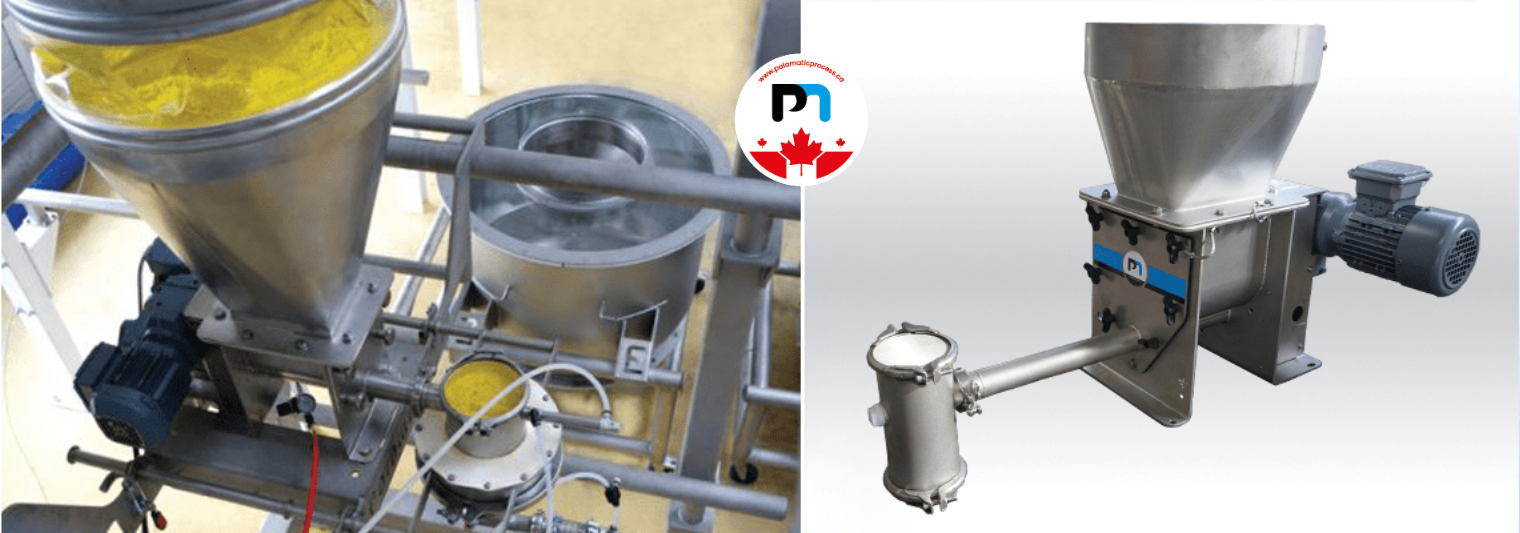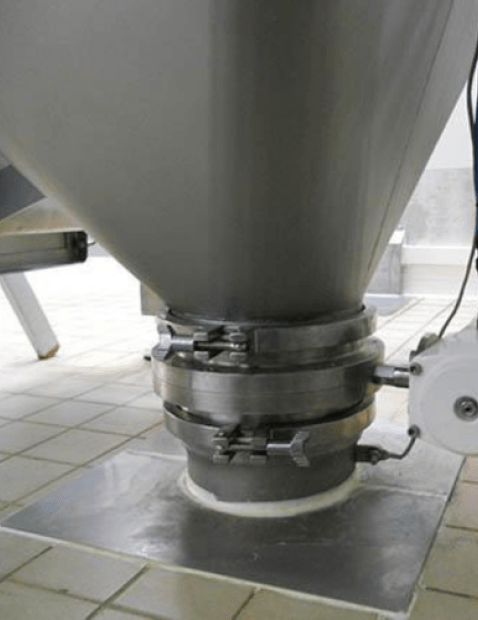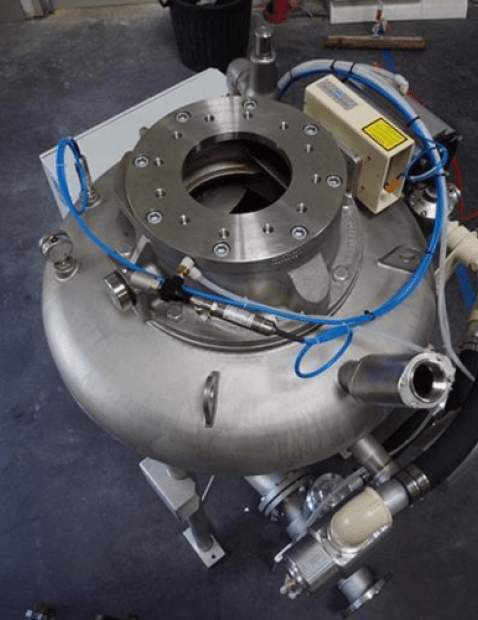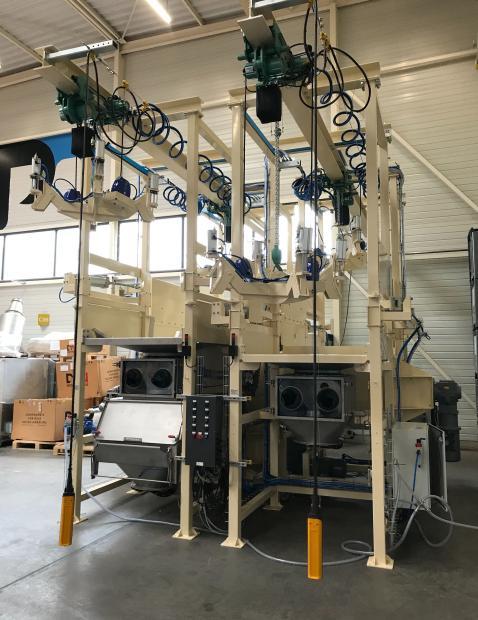
The use of pyrotechnic powders plays a central role in many strategic sectors, particularly in military establishments and the fireworks industry. Whether it is the processing of pyrotechnic products for the armed forces or the manufacture of fireworks for controlled use, mastering these highly reactive substances is a major challenge.
These powders, which are both powerful and unstable, require strict protocols from the moment they arrive at the factory until their final integration into weapon or signaling systems. The history of industrial incidents linked to the improper handling of these materials clearly illustrates the importance of rigorous management. In this context, specialized processing units must comply with specific standards to guarantee the reliability of products and the safety of operators.
In France, several reference sites ensure controlled production, in close connection with the requirements of military applications.
1. Why dosing and weighing pyrotechnic powders is critical ?
1.1 Importance de la précision du dosage
Dans le domaine militaire, la précision du dosage des poudres pyrotechniques est un facteur déterminant pour garantir la performance des produits utilisés sur le terrain. Un mauvais calcul de proportions peut provoquer des défaillances graves, voire des incidents critiques. L’historique de la pyrotechnie regorge d’exemples illustrant les dangers d’un mauvais usage des composants.
Un cas célèbre remonte à la Première Guerre mondiale : des obus mal dosés, contenant un excès de perchlorate d’ammonium, provoquèrent des détonations prématurées dans les lignes arrière, causant des pertes dans les armées françaises. Plus récemment, des tests ratés sur des missiles balistiques ont été attribués à un désequilibre dans le dosage du comburant et du liant.
Ces erreurs illustrent à quel point la rigueur dans les zones techniques de dosage est essentielle. Chaque gramme compte. Dans une usine de production d’artifices à vocation militaire, la moindre variation compromet la stabilité chimique et réduit l’efficacité opérationnelle de l’équipement déployé.
1.2 Homogénéité des mélanges et enjeux opérationnels
L’homogénéité des mélanges pyrotechniques est tout aussi cruciale que leur dosage. Dans les sites techniques de fabrication, les composants – comme la poudre noire, l’hexogène ou encore le nitrate de potassium – doivent être parfaitement répartis pour garantir une réaction uniforme. Cela est particulièrement vrai pour les artifices embarqués dans des missiles ou munitions à fragmentation, où toute variation entraîne un comportement imprévisible.
Prenons l’exemple d’un missile sol-sol : une composition mal homogénéisée peut ralentir la phase de propulsion, modifier la trajectoire ou encore provoquer une explosion partielle en vol. Dans le contexte des armées, ces défaillances peuvent avoir des conséquences opérationnelles majeures, allant de l’échec d’une mission à des pertes humaines.
Les établissements spécialisés dans la production d’équipements pyrotechniques en France accordent une importance capitale à l’uniformité des mélanges. Des systèmes de pesée automatisés et des doseurs à vis synchronisés garantissent une distribution constante, conformément aux références techniques imposées. Ces procédés permettent de respecter les normes tout en assurant un usage fiable et reproductible des poudres dans les situations critiques.
1.3 Sécurité des unités spécialisées et des opérateurs
La manipulation de poudres pyrotechniques dans un contexte militaire impose des règles strictes de sécurité, en particulier dans les ateliers de transformation et de dosage. Ces substances sont souvent sensibles aux frottements, à la chaleur ou à l’humidité. Leur simple manipulation peut devenir dangereuse si l’environnement n’est pas strictement contrôlé.
Des incidents survenus dans plusieurs usines européennes ont montré que l’accumulation de fines particules dans l’air peut entraîner des explosions de poussières, même sans contact direct avec une flamme. D’où la nécessité de dispositifs tels que les hottes aspirantes, les systèmes de mise à la terre, ou encore les zones de confinement sous atmosphère inerte. Ces équipements sont aujourd’hui largement utilisés dans les établissements de référence pour assurer un haut niveau de sécurité.
Les opérateurs, formés aux bonnes pratiques, sont également encadrés par une direction technique rigoureuse. Chaque poste est conçu pour minimiser les risques liés à l’utilisation des poudres, tout en assurant la conformité aux normes en vigueur. En France, plusieurs acteurs comme Titanobel ou Pyroalliance appliquent ces protocoles stricts pour garantir la protection des personnes et des infrastructures.
2. Dosing and weighing technologies for explosives
2.1 Presentation of the main technologies
The dosing of energetic materials requires technologies that are robust, precise and adapted to the safety requirements of establishments working for the armed forces. The most commonly used systems are screw feeders, weight feeders and double weighing installations, specially designed to handle sensitive materials in high-risk environments.
Screw feeders are particularly suitable for poorly flowing powders such as black powder or certain perchlorate-based compounds. They allow for controlled use of the material, while limiting friction that can generate hot spots. This type of equipment is often installed in workshops with reactive compounds with a high level of containment.
Weight dosing, on the other hand, ensures dynamic and continuous weighing, guaranteeing extreme precision, even at very low rates. This system is preferred in military factories for complex load dosing operations, particularly in the manufacture of pyrotechnic products for missiles or signaling devices.
In all cases, these technologies are integrated into production lines that are completely secure and comply with the standards in force in leading establishments, particularly in France.
2.2 Process automation and control
In modern technical design lines, automation plays a key role in securing the weighing and dosing stages. It not only reduces manual use, a source of errors and risks, but also ensures the optimal use of pyrotechnic powders.
The automated systems are equipped with electrostatic charge sensors capable of detecting in real time any abnormal accumulation that could lead to accidental ignition. At the same time, temperature, humidity and pressure sensors monitor the environment to preserve the chemical stability of the mixtures. The integration of supervision software also enables the technical management to monitor each operation with precision.
Establishments such as Pyroalliance and PB Clermont have implemented these advanced monitoring systems to improve the reliability of their military fireworks processing flow. This approach promotes the repeatability of processes and considerably limits the risks associated with human or environmental variations.
Automation also guarantees complete traceability, which is essential in sensitive areas such as military pyrotechnics, where each batch must meet strict specifications.
2.3 Controlled environments and optimal conditions
In workshops that manufacture fireworks, the establishment of controlled environments is essential to ensure the safety of operators and the quality of finished products. Pyrotechnic clean rooms, for example, prevent any cross-contamination between different reactive substances.
Factories specializing in France, particularly in the military sector, use inert atmosphere chambers (nitrogen or CO₂) to stabilize sensitive powders such as RDX or HMX. These environments limit undesirable chemical reactions and guarantee consistent mixtures.
Containment tanks, extractor hoods and localized extraction systems help contain fine particles, thus reducing the risk of dust explosion. These facilities are now standard in all leading establishments working in the military and fireworks sector.

Working on a safe dosing project for sensitive powders ?
I’m available to support your assessment and enhance your equipment setup.
Loïc, expert in precision powder dosing and handling
3. Safety standards for military explosives
3.1 International and national regulatory framework
The manufacture and use of active powder charges for military purposes are subject to strict regulations at national and international level. These standards aim to regulate the safety of technical facilities, operators and equipment, while guaranteeing product compatibility between the various partner armies.
Among the reference texts are NATO's STANAG agreements (Standardization Agreement), which harmonize the safety and performance requirements for military explosives. In the United States, the ITAR regulations (International Traffic in Arms Regulations) impose strict controls on the export of pyrotechnic technologies.
In Europe, the directive on explosive substances governs the handling, transport and storage of sensitive powders, as does ISO standard 14492, which defines the safety requirements applicable to explosive processing equipment.
French establishments, particularly those specializing in the production of powders and fireworks, are required to comply with all these frameworks in order to obtain the necessary authorizations. The management of each site plays a key role in the implementation and monitoring of these obligations.
3.2 Good practices and operational recommendations
Beyond official standards, good practices have become established in pyrotechnic manufacturing plants and operational sectors. These methods, based on feedback from the industry and the defense sector, help to reduce the risk of incidents when using powders.
The prevention of friction and impact is essential: equipment is coated with anti-spark materials, and the tools used are designed to prevent accidental initiation. The systematic grounding of all equipment eliminates electrostatic charges, which are responsible for many spontaneous ignitions.
In modern workshops, the movement of operators is controlled, and specific areas are assigned to the different stages of production. This rigorous organization makes it possible to maintain a high level of safety in all the establishments concerned.
3.3 Specific equipment to guarantee safety
To ensure maximum safety when handling powders for technical explosives, several types of equipment have become essential in specialized factories. Dosing stations under an extractor hood, for example, considerably reduce the dispersion of particles in the air.
HEPA filters are used to capture high-risk microparticles, while the automation of production lines limits human intervention in critical areas. These facilities, integrated into workshops that comply with the requirements of defense customers, ensure a controlled environment that meets the strictest standards.
4. Our expertise
4.1 Brief presentation of the company
Palamatic Process is a French company specializing in the design of equipments for the handling, dosing and weighing of powders in sensitive environments. With a solid reputation in the pyrotechnics and military applications sectors, our company has been supporting manufacturers in search of efficient and secure solutions for more than 30 years.
4.2 Solutions offered by Palamatic
Our solutions are specifically developed to meet the requirements of the operational sectors of fireworks production and powders for military use. We offer weight dosing systems, containment stations, and integrated installations under controlled atmospheres. This equipment allows for controlled use of powders while guaranteeing operator safety and regulatory compliance.
Thanks to our expertise, several factories in France and abroad trust us to optimize their processes, from the receipt of raw materials to final packaging, in strict compliance with current standards.
Do you want to secure your pyrotechnic processes and increase the precision of your dosages? Our technical teams are at your service to design customized solutions adapted to your specific use. Contact us today for personalized support and to increase the reliability of your installations.



















